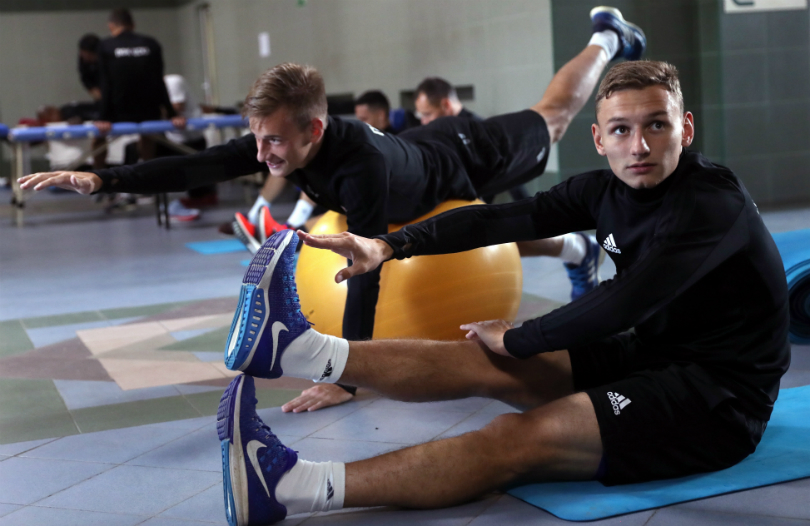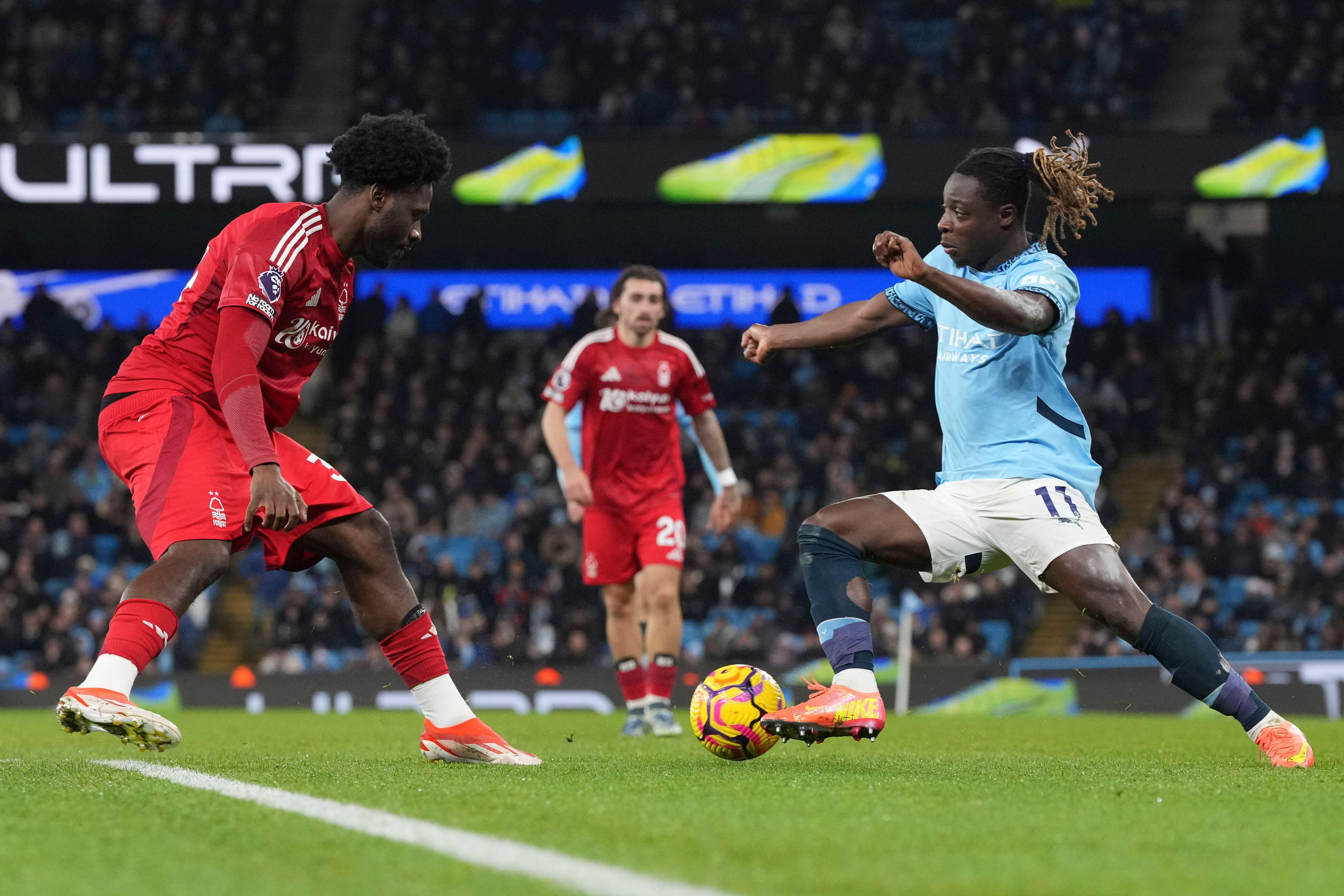5 injury prevention exercises
Centre for Health and Human Performance physio, Tom Jackson, has worked with Charlton, Fulham and Southampton - his five injury-prevention exercises will reduce the risk of you getting crocked

The exercise: Arabesque
The arabesque was originally a ballet move, but is now used by scores of footballers to prevent and recover from hamstring injuries. This exercise will strengthen your posterior chain (a group of muscles on the rear of your body), while improving eccentric strength in the hamstrings. It also puts load through the tendons in the back of the leg, which provides you with an excellent platform to generate fast muscle activation and become more powerful. Anyone returning from a hamstring injury should definitely do this.
Common mistakes
• Back leg doesn’t go parallel with the ground. Squeeze the glutes on your back leg as you bend forwards and keep it in line with your body
• Pelvis doesn’t stay level through the movement. Don’t allow your pelvis to twist as you bend over. Try to keep it parallel to the ground.
Single Leg Squat
Internal knee injuries are often suffered by footballers. This exercise will boost joint stability, balance and reduce your risk of a knee injury. It’s important you have control through your ankle, knees, hips and back. This exercise makes all the muscles work in conjunction with each other and provides excellent loading through the tendons. Stability when standing on one leg is excellent for changing direction and will give you a strong and stable base to strike a ball from. You may need to start with smaller squats to start with, while your range and strength improve or use a TRX as support.
Common mistakes
• Weight transfers onto the toes and heel lifts off the floor. Keeping the weight into the heel will help recruit into the glutes and maximise pelvic stability.
• Knee moves too far forwards and body leans too far forwards. This will cause you to recruit more into the muscles at the front of and not utilise your glutes appropriately
• Too much flexion of the spine during the movement. Try to keep it in a neutral position. Again you will load the quads excessively.
The exercise: Side plank
This is a great exercise for people who suffer from back pain. Our obliques provide stability and support for our spine and work alongside the muscles in our back. This exercise will also improve control of force across your pelvis, providing you with a great platform for multi-directional movement. It will boost your core strength and reduce the risk of you getting knocked off the ball. Evidence has shown that people who are unable to maintain this position for more than a minute are three to four times more likely to experience lower back pain. A strong trunk will also help to support the upper body and upper limbs. This will help goalkeepers in generating speed and power when throwing and give them great support when landing after diving.
Common mistakes
• Ankles, knees, hips and shoulders don’t stay in a straight line. Squeeze your glutes throughout the exercise. This will push your pelvis forwards and support you back more.
• Lateral flexion in the spine. This is either caused by the hips being too high or too low. Again aim for a neutral position where there are no increased curves on either side.
• Elbow not directly under the shoulder. This will make it very difficult to maintain the force through the upper arm and increase stress around the shoulder.
The exercise: High box step-up
Power is essential for you to generate speed and to be able to jump successfully. Working on individual legs will have a greater effect on balance and coordination, which will benefit you when striking a ball and particularly during cutting movements. This exercise ticks all these boxes and more. The high box step up helps to generate power through recruitment of our quads, Adductor Magnus, hamstrings and glutes. As it is a powerful movement it should be performed at speed through the drive phase, whilst maintaining balance and control. You should the lower yourself steadily back to the ground. This whole leg workout will help to improve your muscle tone and make you faster.
Get FourFourTwo Newsletter
The best features, fun and footballing quizzes, straight to your inbox every week.
Common mistakes
• Using the back leg to drive off. This will reduce the activation of the glutes and adductors in the front leg. If you find yourself doing it lift your toes up on the back foot before you start and keep your back knee straight.
• Leaning too far forwards. Push your chest out through the movement and try and keep your body upright. Think of a piece of string pulling you straight up to the ceiling.
• Dropping down off the box. After standing up and holing a great finish position don’t just drop down again for the next rep. The lowering phase is as important as the drive phase and should be performed slowly under maximal control.
½ Turkish get-up
It may be a ridiculous name but it’s a superb full body functional exercise that will work pretty much every joint and muscle, making you stronger in rotational movements. On top of all that is going to work your hamstring, glutes, obliques and shoulders a lot and promote hip mobility and core strength. It will also give you great sense of your body’s position through your ankles, knees and shoulders.
When you’ve mastered this technique, and it will likely take a little while, you can progress onto a full get-up where you finish in a standing position or change the weight over to something a little less stable such as a core bag.
Common mistakes
• Rocking to sit up. The movement needs to be a smooth contraction. Move your shoulder towards your opposite hip as you contract your abdominals. If you can’t do it reduce the size of the weight that you are holding, pause at the point you get stuck take a breath in and then move again as you breathe out.
• Not keeping the KB arm vertical at all times. Not only will this make the exercise harder but also you will not get the massive benefit in the rotator cuff around the shoulder and most of the sequencing of the move will be compromised.
• Being too compressed. Aim to keep the space between your ribs and your pelvis as you sit up. Don’t place your chin on your chest through the hip drive.After you sit up keep the chest out and the spine neutral.
• Not driving the hips through. A lot of people are content just to lift their bum off the ground. In order to strengthen the posterior chain you need to drive the hips right through so your weight bearing knee, hips and shoulders are in a straight line.
Tom Jackson is a physio at the Centre for Health and Human Performance. For more expert advice or to book an appointment at the clinic, click here to visit their website or follow them on Twitter, Facebook and Instagram.
